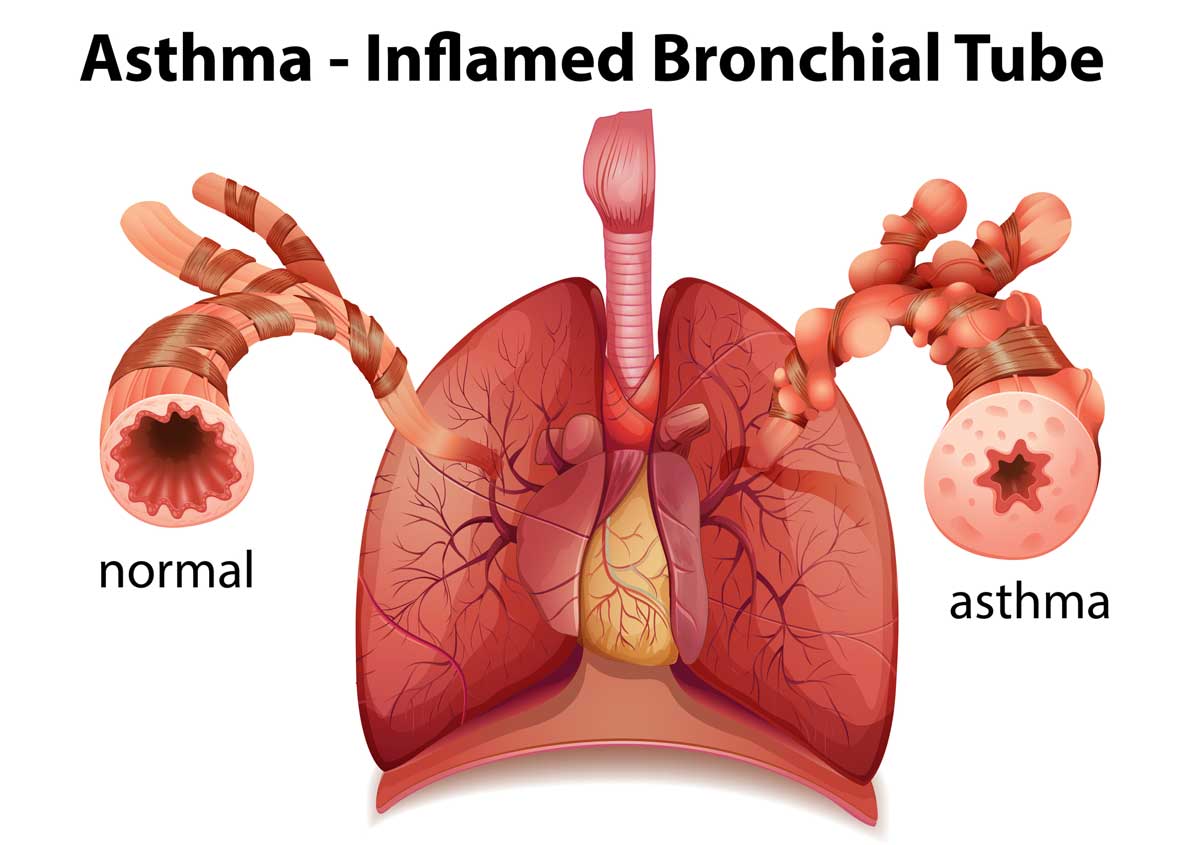Nursing Care Plan of a Child with Asthma
(Nursing Care Plan of a Child with Asthma)
Student Name: Date:
Patient Identifier: D.M. Patient Medical Diagnosis: Asthma
Nursing Diagnosis (use PES/PE format):

- Ineffective breathing patterns related to bronchial tubes swelling and spasm responding to irritant inhalation, allergic reaction, infection, or a drug as evidenced by continuous coughing, nasal flaring, cyanosis, and respiratory depth changes.
- Ineffective airway clearance related to mucosal edema, heightened pulmonary secretions, and bronchospasms as evidenced by cough, cyanosis, respiratory rate and rhythm changes, wheezes, rhonchi, and atypical arterial blood gasses. (Nursing Care Plan of a Child with Asthma)
Assessment Data(Include at least three-five subjective and/or objective pieces of data that lead to the nursing diagnosis) |
Goals & Outcome(Two statements are required for each nursing diagnosis. Must be Patient and/or family focused; measurable; time-specific; and reasonable.)
|
Nursing Interventions(List at least three nursing or collaborative interventions with rationale for each goal & outcome.) |
Rationale(Provide reason why intervention is indicated/therapeutic; provide references.) |
Outcome Evaluation & Replanning
(Was goal met? How would you revise the plan of care according to the patient’s response to current plan ?) |
Subjective
Objective
|
Diagnosis #1
Diagnosis #2
|
|
1. This intervention helps increase breathing patterns’ effectiveness by reducing work of breathing. Rest periods help reduce fatigue that is associated with respiratory failure (Martin, 2023).
2. Fatigue is a sign of distress and can cause respiratory failure, hence the need to evaluate for fatigue and stress (Martin, 2023).
3. Assessing vital signs can help identify issues like vasoconstriction potential, hypotension, and tachycardia (Martin, 2023).
1. It is critical to pace the patient’s activities by dividing them into parts and taking rest breaks between the activities to prevent fatigue and enhance proper breathing efforts.
2. Breathing and coughing exercises help ease and spat excess secretions, contributing to effective mucus clearance from the lungs. The exercises also act as coping mechanisms to minimize air trapping (Macêdo et al., 2016).
3. Positions that aid or ease breathing can help reduce muscle fatigue and help with chest expansion, reducing breathing distress (Hashmi et al., 2021).
|
Outcome #1
Outcome one was achieved when the patient achieved an optimal breathing pattern, relaxed breathing, and respiratory rate and with the disappearance of dyspnea. Outcome was also attained when the patient demonstrated normal arterial blood gas outcomes and was free of cyanosis.
Outcome #2 Outcome two was also achieved as the patient verbalized comprehension of the cause and therapeutic management intervention. The patient also demonstrated improved clearance behavior.
|
(Nursing Care Plan of a Child with Asthma)
References
Hashmi, M. F., Tariq, M., Cataletto, M. E., & Hoover, E. L. (2021). Asthma (Nursing).
Macêdo, T. M., Freitas, D. A., Chaves, G. S., Holloway, E. A., & Mendonça, K. M. (2016). Breathing exercises for children with asthma. The Cochrane database of systematic reviews, 4(4), CD011017. https://doi.org/10.1002/14651858.CD011017.pub2
Martin, P. (2023, January 3). Asthma nursing care plans. https://nurseslabs.com/asthma-nursing-care-plans/



